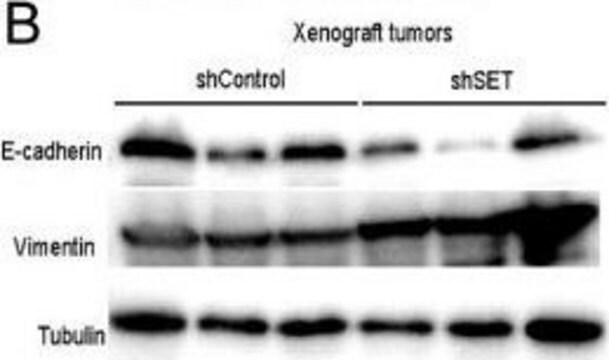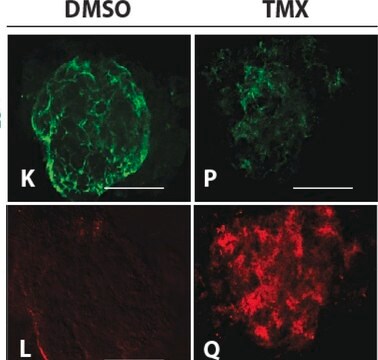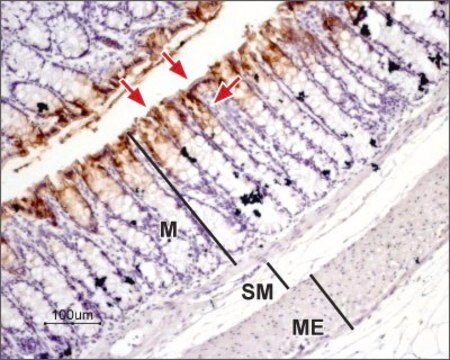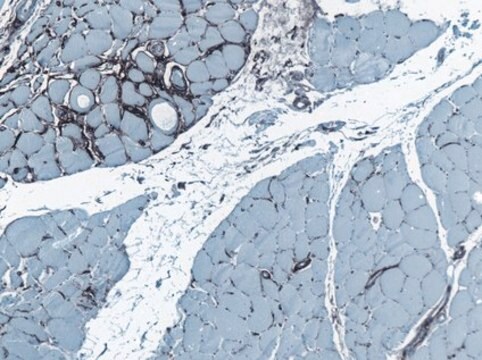V5255
Anti-Vimentin Antibody
mouse monoclonal, VIM-13.2
Sinonimo/i:
Anti-F5H288
Scegli un formato
Scegli un formato
About This Item
Prodotti consigliati
Nome del prodotto
Monoclonal Anti-Vimentin antibody produced in mouse, clone VIM-13.2, ascites fluid
Origine biologica
mouse
Livello qualitativo
Coniugato
unconjugated
Forma dell’anticorpo
ascites fluid
Tipo di anticorpo
primary antibodies
Clone
VIM-13.2, monoclonal
Reattività contro le specie
chicken, rat, human, rabbit, frog, mouse
tecniche
indirect immunofluorescence: 1:200 using cultured chicken fibroblasts
western blot: 1:500 using human fibroblasts cell extract
Isotipo
IgM
N° accesso UniProt
Condizioni di spedizione
dry ice
Temperatura di conservazione
−20°C
modifica post-traduzionali bersaglio
unmodified
Informazioni sul gene
human ... VIM(7431)
mouse ... Vim(22352)
rat ... Vim(81818)
Descrizione generale
Immunogeno
Applicazioni
- Immunocytochemical localization of vimentin in normal and pathological tissue of mesenchymal origin.
- It can also be used in immunoblotting
- Immunofluorescence
- Further, anti-vimentin antibody can be used to distinguish tumors and metastatic lesions derived from sarcomas, lymphomas, and melanomas.
Azioni biochim/fisiol
Altre note
SAB4200716 Anti-Vimentin antibody, Mouse monoclonal
clone VIM-13.2, purified from hybridoma cell culture
Esclusione di responsabilità
Non trovi il prodotto giusto?
Prova il nostro Motore di ricerca dei prodotti.
Prodotti correlati
Codice della classe di stoccaggio
10 - Combustible liquids
Classe di pericolosità dell'acqua (WGK)
WGK 3
Punto d’infiammabilità (°F)
Not applicable
Punto d’infiammabilità (°C)
Not applicable
Scegli una delle versioni più recenti:
Certificati d'analisi (COA)
Non trovi la versione di tuo interesse?
Se hai bisogno di una versione specifica, puoi cercare il certificato tramite il numero di lotto.
Possiedi già questo prodotto?
I documenti relativi ai prodotti acquistati recentemente sono disponibili nell’Archivio dei documenti.
I clienti hanno visto anche
Active Filters
Il team dei nostri ricercatori vanta grande esperienza in tutte le aree della ricerca quali Life Science, scienza dei materiali, sintesi chimica, cromatografia, discipline analitiche, ecc..
Contatta l'Assistenza Tecnica.














